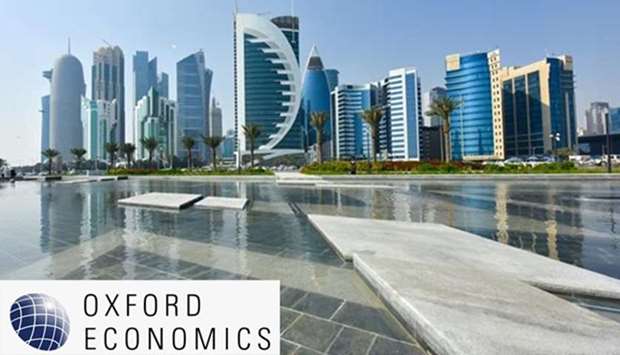Qatar’s GDP growth is seen averaging 2.9% in 2021-22, according to Oxford Economics, which still looks for an “improvement” in the medium term, amid ongoing investment ahead of World Cup 2022 and a rise in gas production.
This would imply an improvement on 2019, when Oxford Economics estimates growth stagnated.
The Qatari economy, however, is yet to show “convincing” signs of stabilisation, it said.
“We still see the economy recovering gradually during 2020, but given the headwinds to activity from the spreading virus we have downgraded our 2020 GDP growth forecast to 2% from 2.3%,” Oxford Economics noted.
The PMI is sending mixed signals about non-oil activity. The survey slipped again in January to 48.7, from 49.4 in December last year, and remains below the 50 threshold that divides expansion from contraction.
Stagnant consumer confidence continues to dampen spending.
Some key factors behind Oxford Economics’ near-term projections include some recovery in crude production in 2020, ongoing priority for Qatar’s gas sector despite downside risks, fading weakness in non-hydrocarbon sector, supportive budget spending, sound banking sector, subdued inflation and efforts to revive the country’s tourism sector.
Crude oil output rose just 0.1% in 2018 and Oxford Economics thinks it declined by 0.2% in 2019.
Industrial production fell in Q4 and nominal exports contracted throughout the year.
With external demand risks diminishing, it retains its projection for oil output in 2020 of 615,000 barrels per day (bpd), above the levels achieved in 2018 and 2019.
Growth in the non-oil sector averaged 3.5% in 2017-18 but it slowed in 2019, notwithstanding outlays on infrastructure projects in preparation for the 2022 World Cup.
While there was some improvement in Q4 last year, including in the real estate sector, activity will face headwinds from the virus spread, which has prompted Oxford Economics to cut its non-oil GDP forecast to 2.9% this year, from 3.5% seen last month.
The fiscal surplus will probably continue to narrow this year, to 0.8% of GDP from an estimated 1.1% in 2019, due to rising spending.
The budget balance returned to surplus in 2018 after three years in deficit, Oxford Economics said.
Qatari banks have been resilient, but their reliance on foreign funding is rising again. And while the overall FX liquidity picture has improved, the local equity market saw relatively flat performance in 2019, after a good run in 2018 when it outperformed its GCC and EM peers.
Hotel occupancy levels have recovered after the hit because of the blockade on the country by some Arab neighbours. But restrictions on mobility accompanying the virus outbreak may pile pressure on again, Oxford Economics said.


